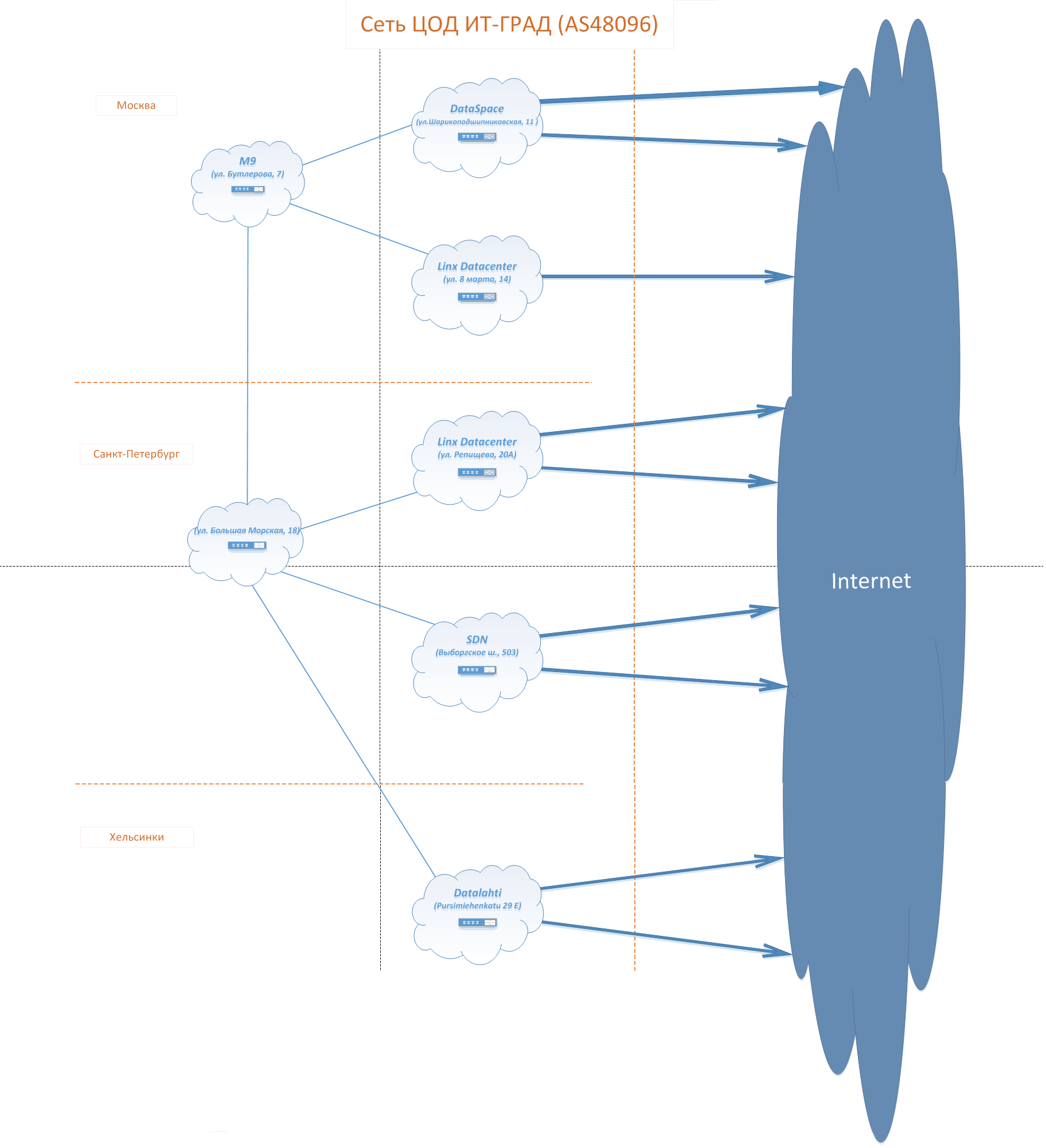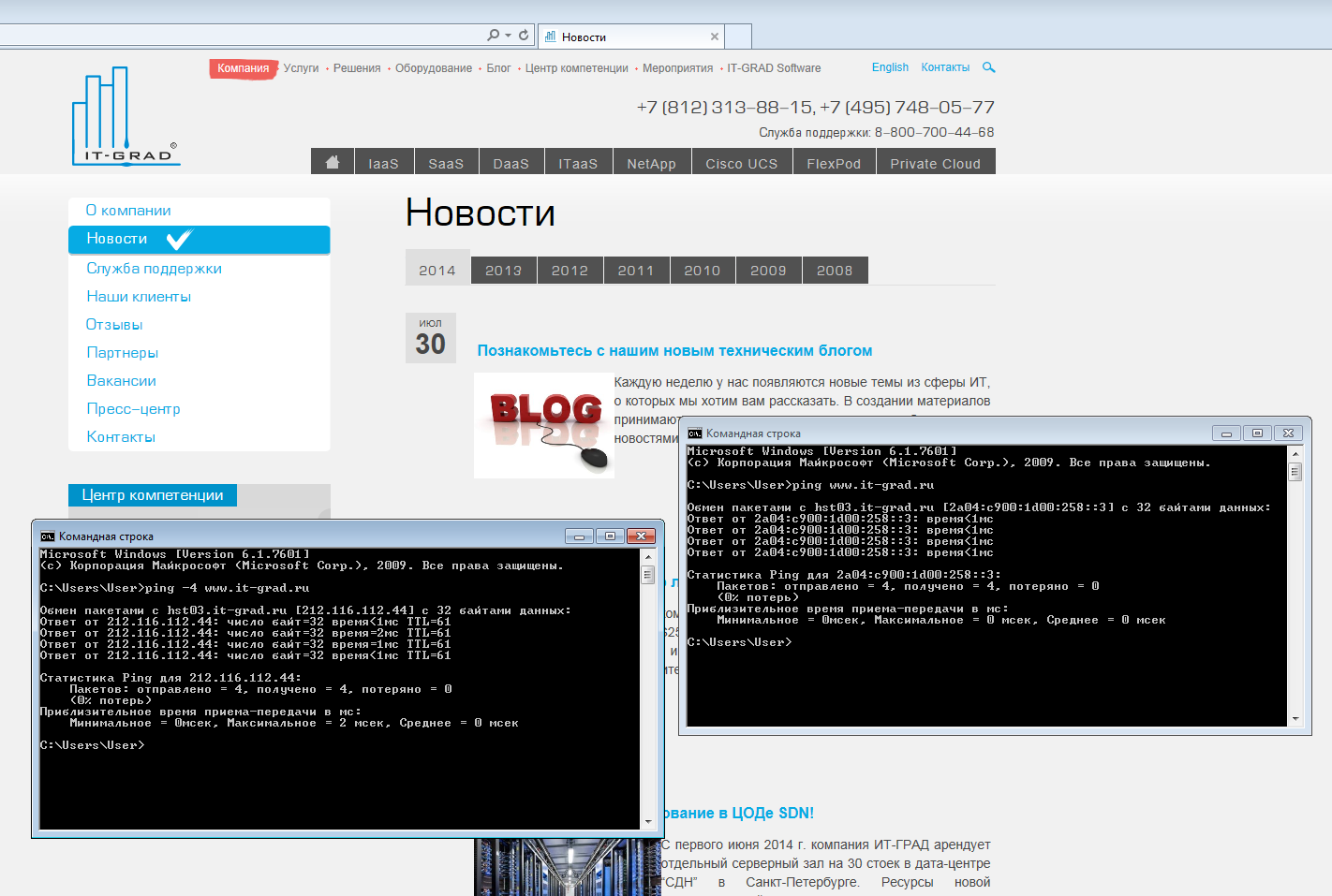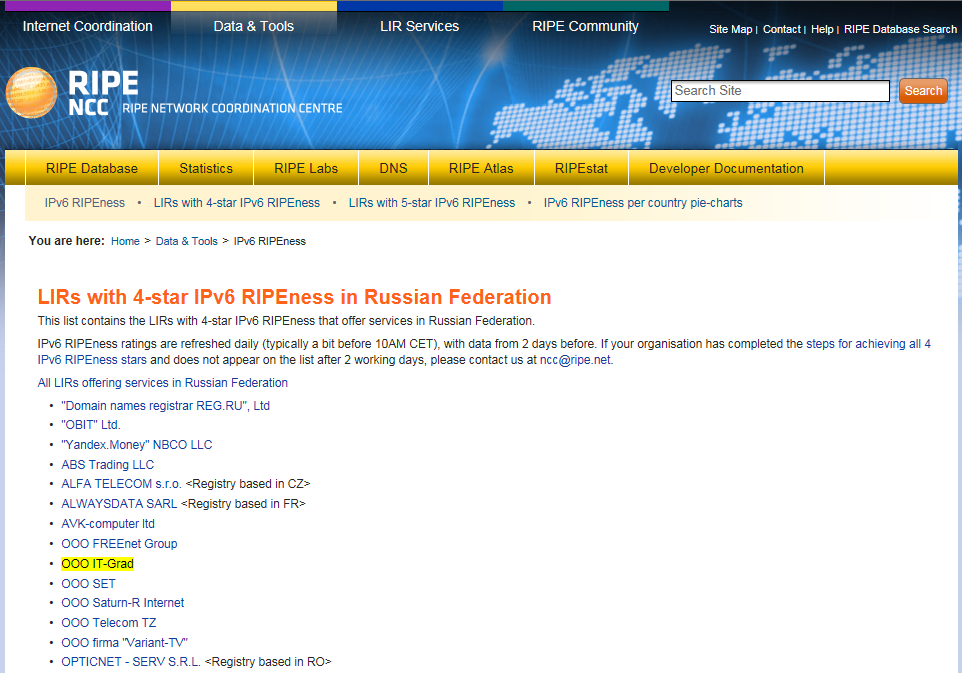Introduction of IPv6 support in IT GRAD company

Everyone knows that the IPv4 address space is very limited and, given the development of the world wide web, is now coming to an end. The IPv6 address space is significantly larger. The transition to IPv6 is inevitable for everyone, it is only a matter of time. And for us, as for the service provider of cloud services, it is important to be prepared for such a transition, both within our own network and for our customers. Next on the transition to IPv6 and the IT GRAD network diagram.
The IPv4 address space has a very limited amount, and now, to get a new IPv4 block from your registrar, you have to put a lot of effort into it. For example, RIPE can issue a new IPv4 block in addition to the previously received ones only after receiving an IPv6 block of addresses.
')
For reference, the RIPE NCC (fr. Réseaux IP Européens + English Network Coordination Center) is one of five regional Internet registrars (English Regional Internet Registries, RIRs) that distribute Internet resources, as well as associated registration and coordination activities aimed at global support for the functioning of the Internet.
The IPv6 address space is significantly larger. And it is difficult to imagine that sometime we will encounter a shortage of addresses. The transition to IPv6 is inevitable for everyone, it is only a matter of time. For us, as a cloud service provider, it is important to be prepared for such a transition, both within our own network and for our customers. Therefore, in April 2014, the IPv6 address block 2A04: c900 :: / 29 was allocated to the IT GRAD company by the European regional Internet registrar RIPE NCC, which marked the beginning of the introduction and development of IPv6 in our company.
Since then, IPv6 connectivity has been planned and carried out with our backbone Internet providers that have this technical capability. Currently it is RETN (http://retn.net) at the DataSpace site in Moscow and Prometheus (http://ptspb.ru) at the Linxtelecom site in St. Petersburg. Taking into account the fact that our sites between cities are connected, we ensure the optimal distribution of IPv6 traffic and its reservation. In addition, DNS servers were upgraded to work with IPv6. The diagram shows a diagram of the IT GRAD network.
Thin lines indicate dedicated channels between data centers, thick - channels on the Internet from providers (bgp). All channels of communication with the Internet are duplicated either by individual channels or by a channel to the Internet through other data centers.

At the moment, our site is translated to IPv6. In the screenshot below, you can see the results of the ping command in two ways:

And here is a trail from the Internet to our site on IPv6:
The RIPE NCC maintains a “4-star” list in which it registers companies that have switched to IPv6 and that fulfill a number of conditions:
- A company must have a dedicated IPv6 block from the RIPE NCC;
- A company must announce IPv6 on the Internet;
- A company must have a route6 object in the RIPE database;
- And the company must have DNS revers record in RIPE database.
The picture below is a screenshot of this very list.

IPv6 for clients
At the moment, we can provide our clients with the opportunity to get access to IPv6, namely, to issue a / 64 block to each client separately. Extraction takes place on request. Your VDC will have a separate network called IPv6-External, which can be connected to cloud virtual machines. The stateless configuration is disabled, and the settings are written to the machines manually.
In the near future it is planned to simplify the process, immediately issuing a dual stack to each client. Dual stack (or dual-stack) refers to a parallel implementation of IPv4 and IPv6. That is, both protocols work on the same network infrastructure, and there is no need for IPv6 encapsulation inside IPv4 using tunneling.
In case you have your own IPv6 block, we can always set up routing with you.
Benefits of IPv6 transition
In the case of using IPv6 addresses, a / 64 network is issued to the client, which makes it possible to use ~ 184 • 10 ^ 17 addresses. Also, the transition to IPv6 makes it possible to evaluate and test new features of the protocol.
Source: https://habr.com/ru/post/118375/
All Articles